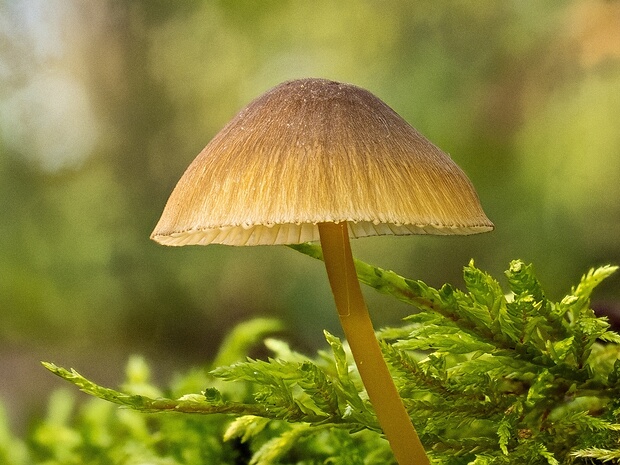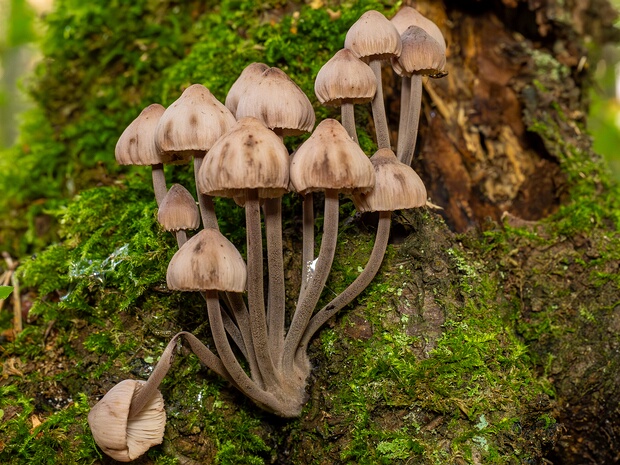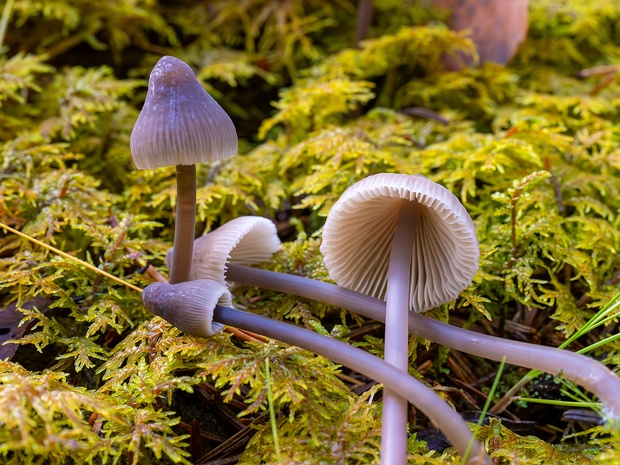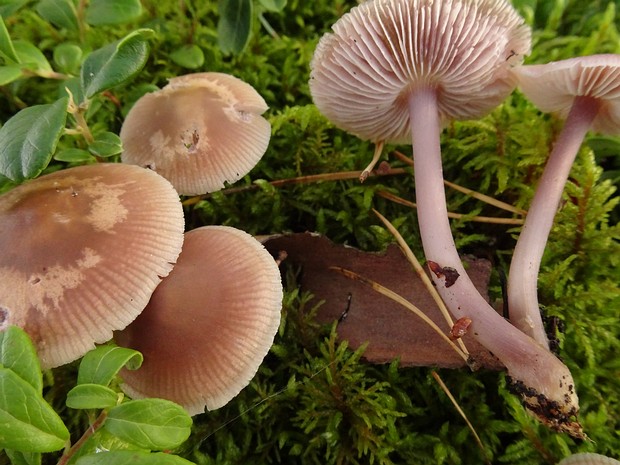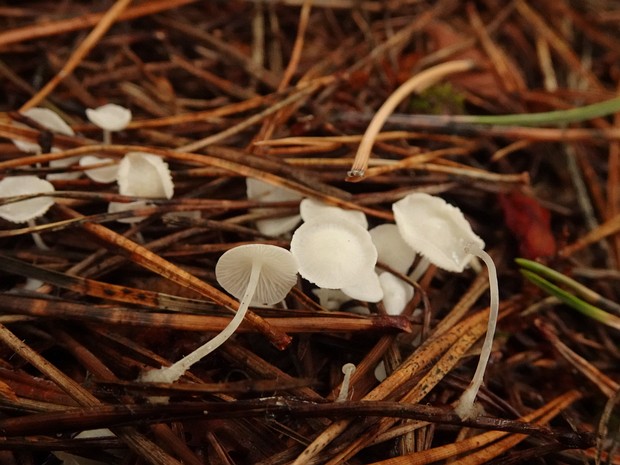
Hemimycena lactea - Гемимицена молочная - Milky Bonnet - Milchling
Hemimycena lactea, commonly known as Milky Bonnet, is a small, white, delicate mushroom found in deciduous forests across North America, Europe, and Asia. It…
11 images
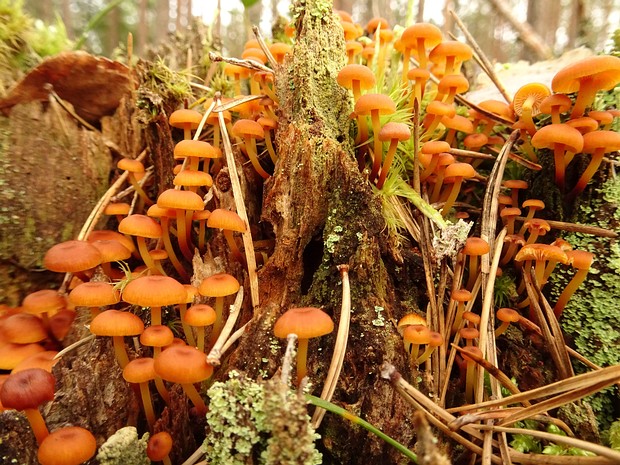
Xeromphalina campanella - Ксеромфалина колокольчатая - Bell-shaped xeromphalina - Glocken-Xeromphalina
Xeromphalina campanella is a small, bell-shaped mushroom belonging to the family Mycenaceae. The cap is convex when young, becoming more flat with age, and…
6 images
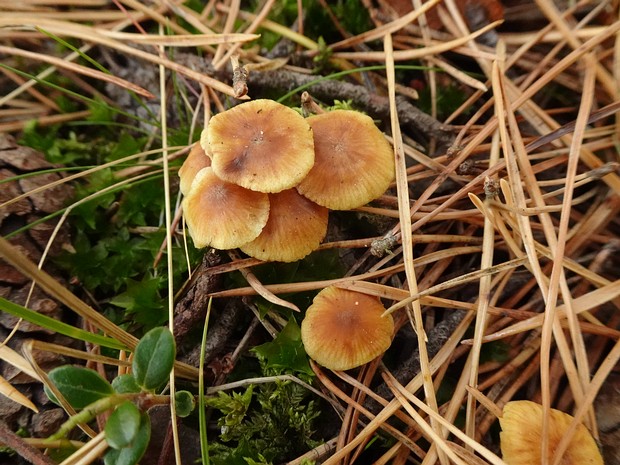
Xeromphalina cauticinalis - Ксеромфалина стеблевидная - Sweet-gum waxcap - Gemeiner Hartriegel-Holzrasling
Xeromphalina cauticinalis is a species of mushroom in the family Hygrophoraceae. It is a small, fragile, stem fungus with a cap diameter ranging from 0.5 to 2.5…
5 images
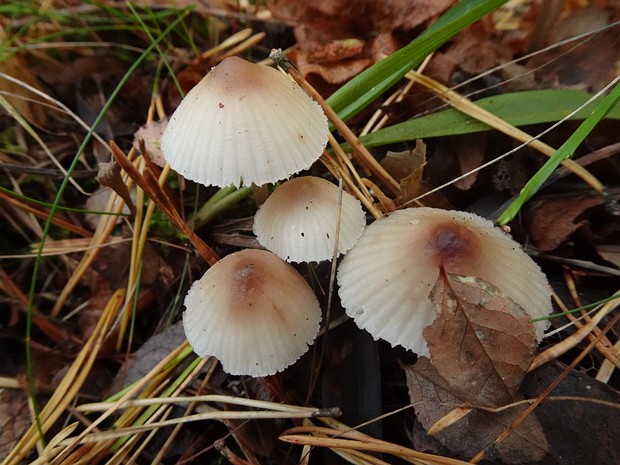
Mycena zephirus - Мицена зефировая - Blue Mycena - Blaue Helmlinge
Mycena zephirus is a small, delicate mushroom with a cap diameter of up to 3 cm. Its cap is initially hemispherical and then flattens out with a noticeable bump…
8 images
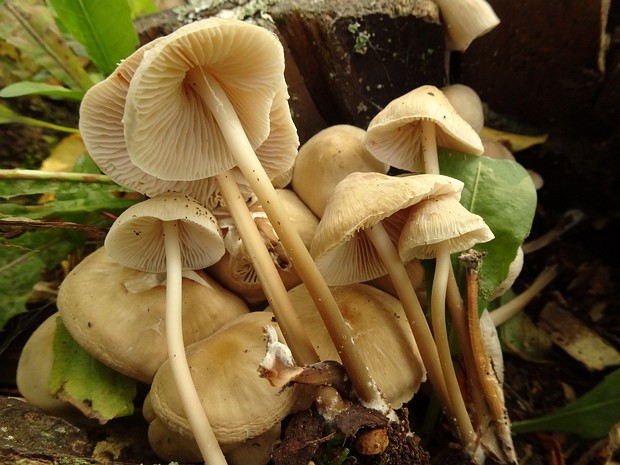
Mycena galericulata - Мицена колпаковидная - Common Bonnet - Helm-Helmling
Mycena galericulata is a small, delicate mushroom with a distinctive conical or bell-shaped cap that ranges in color from grayish-brown to brownish-yellow. The…
10 images
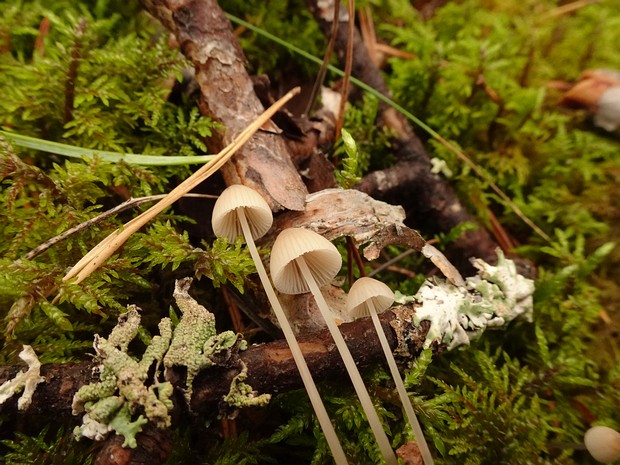
Mycena metata - Мицена конусовидная - Cone Mycena - Kegelhütiger Helmling
Mycena metata is a small, brightly colored mushroom that belongs to the Mycena family. The cap of Mycena metata typically measures 0.5 to 1.5 cm in diameter and…
5 images
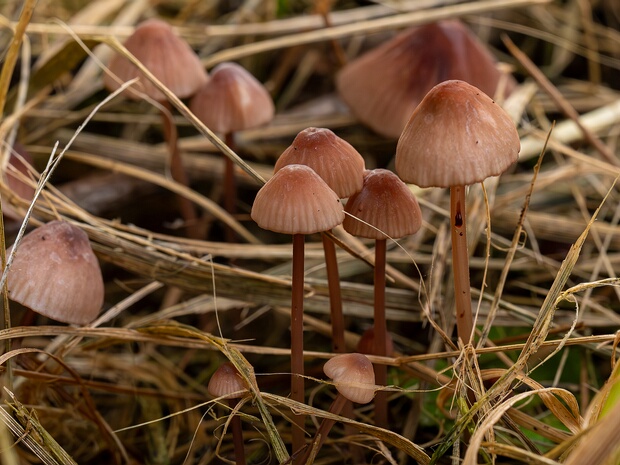
Mycena sanguinolenta - Мицена кровоточащая - bleeding fairy helmet - Blutreizker
Mycena sanguinolenta is a striking and distinctive species of Mycena known for its bright red cap, stem, and gills. The cap is typically 1-2.5 cm in diameter…
13 images
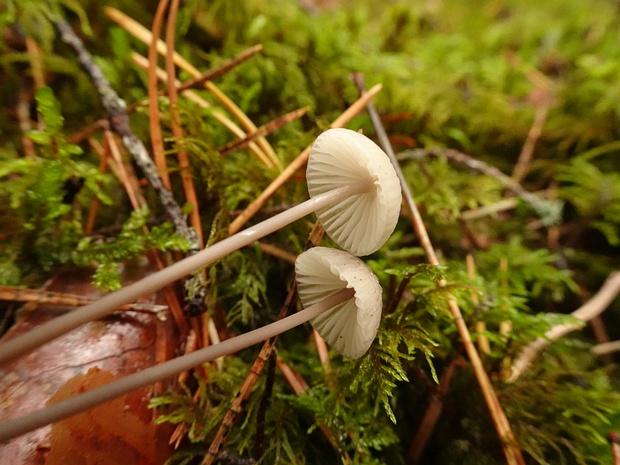
Mycena galopus - Мицена молочная - Milk-white Mycena - Milchweißer Helmling
Mycena galopus is a small, delicate mushroom with a conical to bell-shaped cap that ranges in color from pale grey to white. The cap can reach up to 4 cm in…
5 images
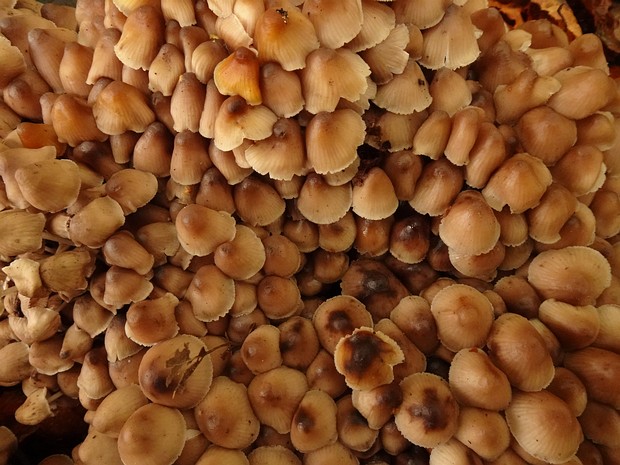
Mycena inclinata - Мицена наклонённая - Clustered Bonnet - Schräg gestielter Helmling
Mycena inclinata is a species of mushroom in the Mycenaceae family. It is characterized by its small size, bell-shaped cap, and long, thin stem. The cap ranges…
31 images
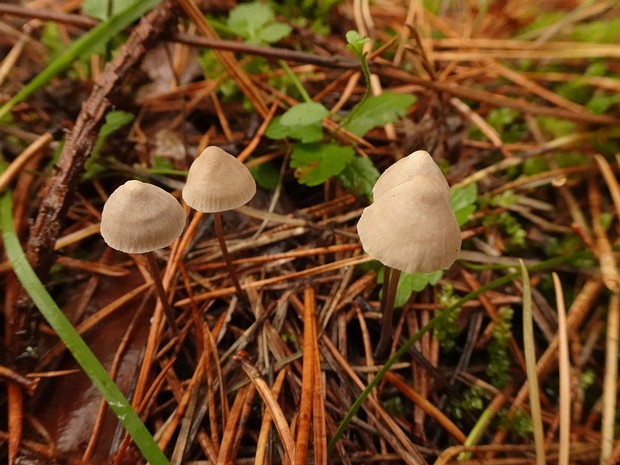
Mycena filopes - Нитконогая мицена - Threadfoot bonnet - Fadenschüppling
Mycena filopes, commonly known as the threadfoot bonnet, is a species of mushroom in the Mycenaceae family. The cap of this mushroom is convex, measuring 1-2 cm…
9 images
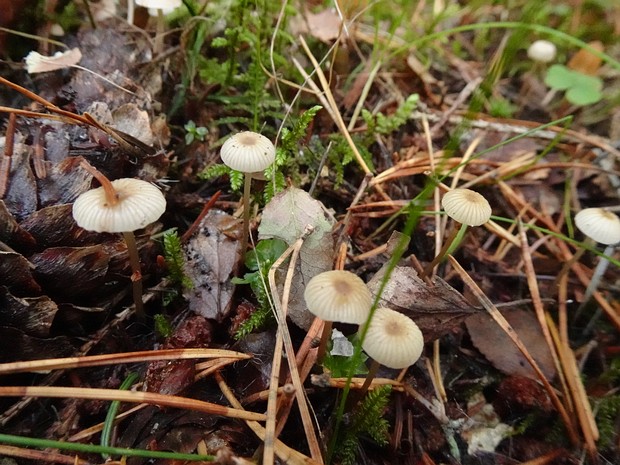
Mycena vulgaris - Мицена обыкновенная - Common bonnet - Gewöhnlicher Helmling
Mycena vulgaris is a species of mushroom in the Mycenaceae family. The cap is typically 1-4 cm in diameter and has a distinctive conical or bell shape. The…
12 images
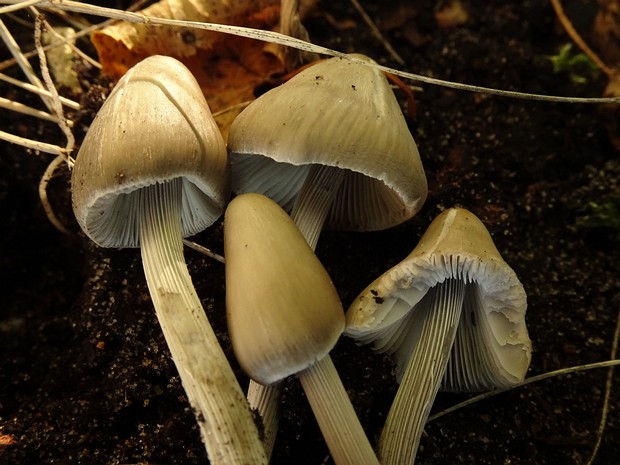
Mycena polygramma - Полосатоножковая мицена - Striped bonnet - Streifling
Mycena polygramma is a small, delicate mushroom with a distinctive striped stem. The cap of this mushroom is bell-shaped and can range in color from…
7 images
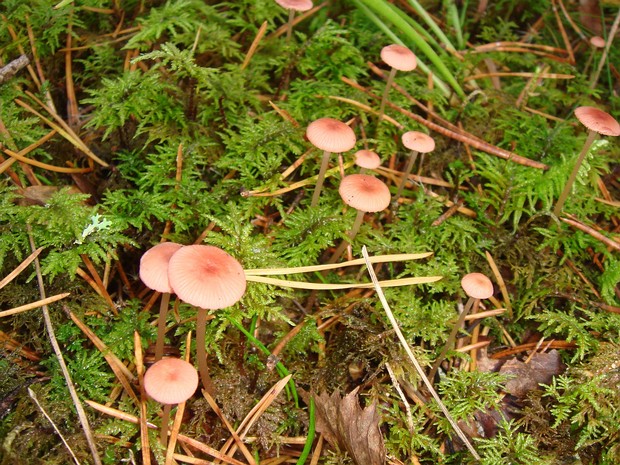
Mycena rosella is a small agaric mushroom characterized by its striking pink or rose-colored
Mycena rosella, commonly known as Rosy Bonnet, is a small and delicate mushroom with a cap that measures around 1-3 cm in diameter. The cap is initially conical…
7 images
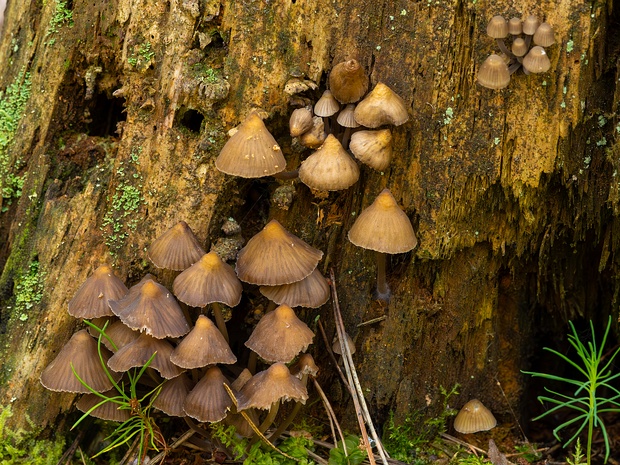
Мицена скученная - Mycena stipata
17 images
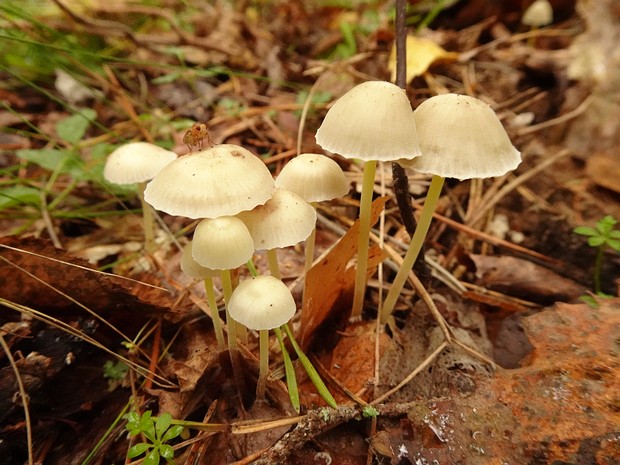
Mycena epipterygia - Мицена слизистая - Yellowleg Bonnet - Schleimiger Helmling
Mycena epipterygia is a species of small, brightly-colored mushroom found in temperate and boreal forests worldwide. The cap is typically 1-3 cm in diameter,…
41 images
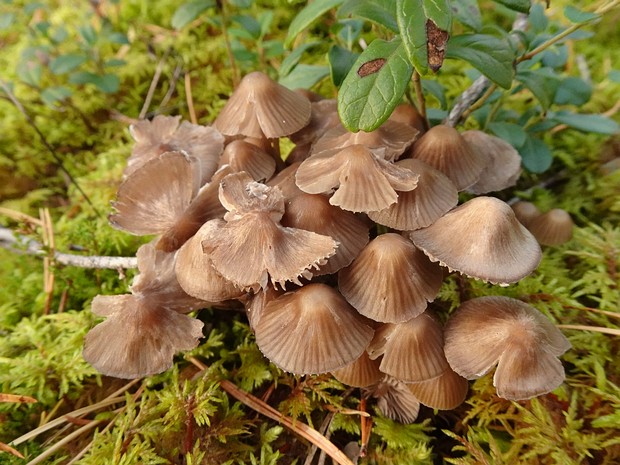
Mycena leptocephala - Мицена хлорная - Greenfoot bonnet - Grünspitziger Helmling
Mycena leptocephala, commonly known as Green-stain Bonnet, is a small, brightly colored mushroom with a cap diameter of up to 3 cm. The cap is initially…
40 images
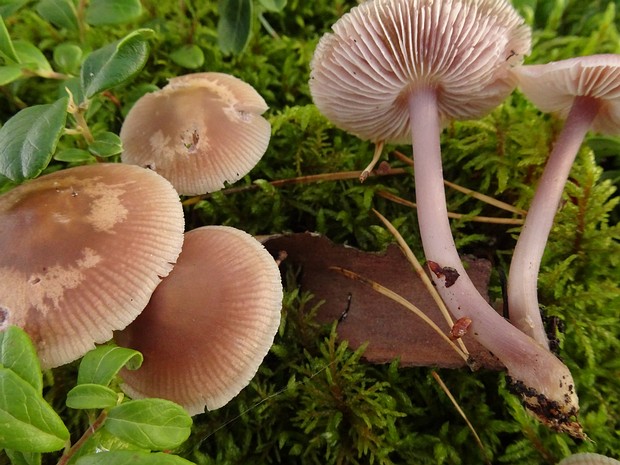
Mycena pura - Мицена чистая - Lilac bonnet - Purpurschneidiger
Mycena pura is a species of mushroom in the Mycenaceae family. It is characterized by a lilac cap, narrow and tall stem, and white gills that often develop…
29 images
Panellus mitis - Панеллюс нежный - Soft bread-rust - Weichporling
Panellus mitis is a small, fan-shaped mushroom that grows in clusters on decaying wood, often on the branches of hardwood trees. It is found in temperate…
20 images
Roridomyces roridus - Роридомицес росистый - Dewdrop mushroom - Tropfenschleierling
Roridomyces roridus, also known as the dewdrop mushroom, is a small agaricomycete fungus that is found in various regions across the world. This fungus is…
4 images
